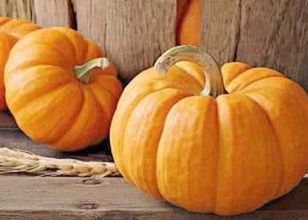The weather characteristics in August: the volt period ended on August 15 and the summer heat on August 23, which means that the heat has stopped. Since then, temperatures in most parts of China have gradually declined. Although the temperature in August was lower than that in July, it was much higher than the average temperature in June and was the second highest monthly average temperature in the year. On a nationwide scale, the precipitation in August is less than the rainy season, which is a hot, hot and dry month, and it poses a great threat to a considerable part of the foliage plants, especially to the cool and humid environment. For this reason, management of fertilization, watering, and shading of flowers must not be taken lightly. August flower management mainly includes the following contents.
First, flower reproduction
Sowing
The types of flowers that can be sown and propagated in August are: rushes, lupins, petunias, snapdragons, echinacea, shamrocks, bellflowers, foxglove, columbaria, jasminoides, nasturtium , pyrethrum, delphinium, cut charlotte and so on.
The kinds of greenhouse plants that can be sown in August are: Pueraria, Dendrobium, Cyclamen, Cineraria, Moth, Four Seasons, Spring, Four Seasons, and Potamogeton (potted).
The woody flowers that can be sown in August include peony, eucalyptus, and safflower oil tea. They can be harvested with the seeding, or they can be seeded until they germinate, and then they can be sown. The pomegranate fruit after harvesting is threshed and washed. The fleshy layer outside the grain is sown and then planted after germination.
2. Cutting
Semi-fine sand and stalked ash as a cutting substrate, feasible insulation cuttings of woody flower species: Pyracantha, Mahonia, smiling, bougainvillea, Erythrina, Sacrifice coral, French holly, Qionghua, Fusang, Lantern, Jasmine, Zhulan, Rubber Tree, Podocarpus, Schefflera, Zhuju, Ruixiang, Hydrangea, Milan, etc. The types of flowers and trees that can be propagated using common sand loam seedlings include: Cyclovirobuxine, Purple magnolia, Pomegranate, Hibiscus, Spiraea, Snowflake, French holly, Ivy, Phnom Penh privet, Red-leaf peony, Dianthus, fig, Oleander Lagerstroemia, June Snow, Admiralty, etc. Using the all-optical spraying method, a large number of cuttings such as Metasequoia lanceolata, Taxodium chinensis and Taxodium can be inserted.
The use of sandy loam as a seedbed can continue the propagation of a series of red (purple, white, pink), amaranth (white), marigold, peacock grass, and chrysanthemum, etc., and can be used as a rooting pot after October. The flowers are placed on the streets until November.
3. Grafting
In August, purple magnolia or white magnolia seedlings were used as rootstocks to produce fine varieties of white magnolia and two qiao magnolia by bud grafting; real peach seedlings of the year were used as rootstocks to buds, peaches, purple leaves, red leaves, and longevity peaches. Mei Mei, Mei Hua, and Shu Ye Mei, etc.; cherry seedlings as the rootstock, bud grafting propagation of Japanese cherry blossoms, etc.; nectarine, mountain apricots as rootstocks, buds and rearing of heavy-leafed Yu plum seedlings; and wild rosewood cuttings as the rootstock, bud grafting varieties The seedlings of Shan Jingzi and Hubei Haishu were used as rootstocks, and the buds then took on the Xifu Begonia, Tessellate, and Begonia flowers; the green maple was used as the rootstock, and the red maple and feather maple were grafted for the crown.
4. Strips
In August, the types of ornamental plants that can be crushed and bred are: honeysuckle, gardenia, garland, hydrangea, oleander, viburnum, gorse, spring, admiralty, gardenia, sweet-scented osmanthus, magnolia, jasmine , Zhulan, rattan roses and so on.
5. Ramets
The types of ornamental plants that can be propagated in August are: Jixiangcao, Jade, Aster, Amaranth, Scarlet, Delphinium, Evergreen, Guangdong Evergreen, Campanulaceae, Dutch Chrysanthemum, Acorus, Water Talan, and Pineapple Classes, a leaf orchid, kidney fern, Zeeland, pyrethrum, Southern bamboo, a yellow flower, green onion, grass and so on.
The types of flowers that can be divided into small balls in August are: Lycoris, Calla Lily, Freesia, and Begonia.
Second, harvesting seeds and planting colonization
Harvest seed
The species of grass that can collect seeds in August are: Chrysanthemum, dill, Scutellaria barbata, Mirabilis japonica, Alpine snow, Patchouli, Phlox, Serpenti, Sweet pea, Chinese poplar, cineraria, etc; The seed of the flower and peony is matured from August to September. When it matures, the fruit cracks and black round spherical seeds are exposed. The seeds can be harvested with the seed, or the collected seeds can be stored with germination and then sown.
The types of woody flowers that can be harvested in August include: peony, pomegranate, eucalyptus, and safflower oil tea.
2. Transplanting colonization
In August, transplanting of trees is generally not performed; for small shrubs, such as leaf privet, Phnom Penh amaranthus, cypress, amaranth, red leaf, euonymus, boxwood, hypericum, samarium Leaf corals, French holly, etc., can be transplanted with large soil balls after strength reduction, but it is necessary to give fine watering, water spray, and shading management after transplanting, and it can be changed only after it is restored. Use general methods for management, otherwise it will easily lead to the death of transplanted flowering shrubs.
To decorate the flower beds or street green areas during the National Day, plant potted marigold, peacock grass, a bunch of red, amaranth, cockscomb, etc., to transplant and plant after transplanting; or from a cutting seedbed, with soil transplanted seedlings in the street green space At the same time, strengthening water and fertilizer management after transplanting can ensure that it can bloom in time during the National Day.
Pumpkin (scientific name: Cucurbita moschata Duch (Duch. Ex Lam.). The ex Poiret) gourd conan melon belongs to a kind of, annual herb, sprawling stem section department to take root, often stipes stout, wide blade ovate or ovoid, slightly soft qualitative, veins bulge, tendril slightly thick, monoecious, stem stout, rib and groove, owing to the different varieties, often several longitudinal furrow or without outside, most seeds, long ovate or oblong.


Pumpkin Seeds
Pumpkin Seeds,Shine Skin Pumpkin Seeds,Salted Pumpkin Seeds,White Pumpkin Seeds
Ningxia Bornstein Import & Export Co., Ltd , http://www.bornstein-agriculture.com